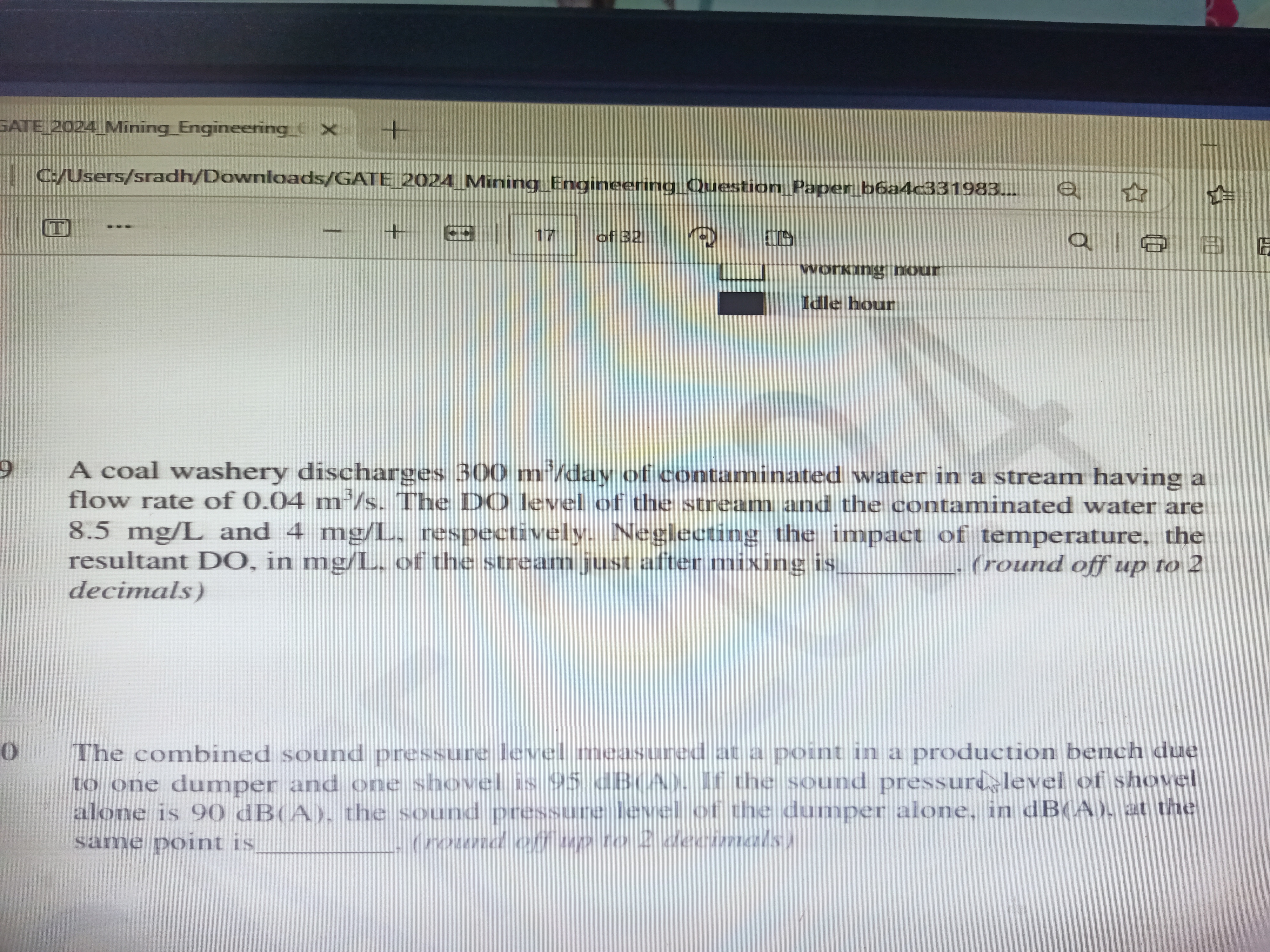A coal washery discharges 300 m³/day of contaminated water in a stream having a flow rate of 0.04 m³/s. The DO level of the stream and the contaminated water are 8.5 mg/L and 4 mg/... A coal washery discharges 300 m³/day of contaminated water in a stream having a flow rate of 0.04 m³/s. The DO level of the stream and the contaminated water are 8.5 mg/L and 4 mg/L, respectively. Neglecting the impact of temperature, the resultant DO, in mg/L, of the stream just after mixing is __________. (round off up to 2 decimals)

Understand the Problem
The question is asking to calculate the resultant Dissolved Oxygen (DO) level in a stream by considering the volumes and concentrations of two different water sources. We will apply the principles of mixing and concentration to find the result.
Answer
The resultant DO level is approximately $8.13 \, \text{mg/L}$.
Answer for screen readers
The resultant DO level, rounded to two decimals, is approximately $8.13 , \text{mg/L}$.
Steps to Solve
- Convert flow rate and volumes to consistent units
First, we need to convert the flow rate of the contaminated water from cubic meters per day to cubic meters per second.
The contaminated water is discharged as: $$ 300 , \text{m}^3/\text{day} = \frac{300}{86400} , \text{m}^3/\text{s} \approx 0.003472 , \text{m}^3/\text{s} $$
- Calculate the total flow in the stream after mixing
Now, sum the flow rates of the stream and the contaminated water: $$ Q_{\text{total}} = Q_{\text{stream}} + Q_{\text{contaminated}} = 0.04 , \text{m}^3/\text{s} + 0.003472 , \text{m}^3/\text{s} = 0.043472 , \text{m}^3/\text{s} $$
- Find the mass of DO in the stream and contaminated water
Determine the mass of dissolved oxygen in each source:
For the stream: $$ DO_{\text{stream}} = 8.5 , \text{mg/L} \times 0.04 , \text{m}^3/\text{s} \times 1000 , \text{L/m}^3 = 340 , \text{mg/s} $$
For the contaminated water: $$ DO_{\text{contaminated}} = 4 , \text{mg/L} \times 0.003472 , \text{m}^3/\text{s} \times 1000 , \text{L/m}^3 \approx 13.888 , \text{mg/s} $$
- Calculate the total mass of DO after mixing
Now, we can add the masses of DO: $$ DO_{\text{total}} = 340 , \text{mg/s} + 13.888 , \text{mg/s} \approx 353.888 , \text{mg/s} $$
- Calculate the resultant DO concentration in the mixed water
Finally, divide the total mass of DO by the total flow rate to find the resultant DO concentration: $$ DO_{\text{resultant}} = \frac{353.888 , \text{mg/s}}{0.043472 , \text{m}^3/\text{s} \times 1000 , \text{L/m}^3} \approx 8.13 , \text{mg/L} $$
The resultant DO level, rounded to two decimals, is approximately $8.13 , \text{mg/L}$.
More Information
This calculation involves the principles of dilution and mass balance in fluid dynamics. The concentration of dissolved oxygen is crucial for the health of aquatic ecosystems, as it supports the life of fish and other organisms.
Tips
- Not converting units consistently (e.g., mixing cubic meters with liters).
- Forgetting to account for both sources when calculating total dissolved oxygen.
AI-generated content may contain errors. Please verify critical information